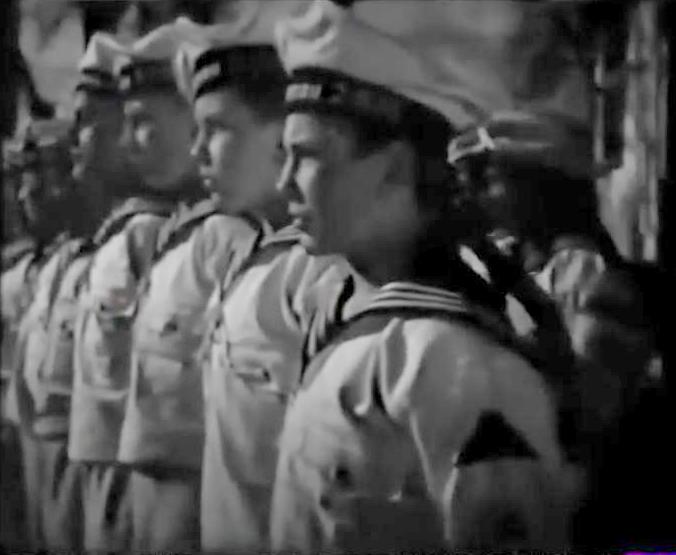
World War II Country Trends: Danzig --World War II Experiences

Figure 1.--Here we see Hitler Youth boys in the baval program. They were assigned to garrison one of the forts in Danzig harbor -- Weichselmünde. This was a very safe assignment untikl the last month of the War and the arrival of the Red Army at Danzig..
|
|
NAZI partisans now totally in control, after launching World War II and invading Poland abd Danzig, demanded the removal of all vestiges of the Poles. Flags, signs and anything else remotely Polish was torn down, torched and destroyed. The Reich racial policies came into force overnight with the NAZI seizure of the city. The Racial Hygiene Corts established ordered the castration of men and sterilization of women considered dangerous to the 'purity of Nordic race'. There were beheading by guillotine.[Więzienna] The courts in Danzig and the annexed territories of Poland were used to take actions against Poles. Even more commonly actions like evictions and forced renmovals were taken againsr Poles without any judicial action. The NAZIs referred to Poles as 'subhumans' and 'Polish rabble. [Wydawn] Wheb there were court actions, some judges ordered tougher sentences than for Germans because of their alleged racial inferiority. [Wachsmann, pp. 202-03.] Albert Forster was the NAZI Governor and Gauleiter of Danzig-West Prussia Danzig (Danzig and the region to the south). Forster was rfresponsible for terrible atrocities against Jews and Poles. He dilgently pursued the Holocasust. He was, however, somewhat more moderate than fellow Gauletier Arthur Greiser in the adjacent Warthegau . The two argued and Greiser complained to Himmler about Forster. Forster was willing to Germanize some of the POlish population , ignoring some NAZI racual doctrine. He was involved, however in the murder of other Poles. He objected to settling urban GErmans repatriayted frim the Baltics. He needed faemers to replace the Poles he was expelling. The War went well for the NAZIs at first. Danzigers and most ither Germans did not suffer greatly. Casualties at gthe fint were light anbd ratiuining was not severe. Zoppot/Sopot was a popular place for soldiers on rest and recreation. Only with the Soviet invasion (June 1941) did casualties begin to increase and ratioing begin to become more rstrictive. The first real taste of the War cme with the first British air raids. The British abnd then the Americans targeted the shipyards and munitions factories. Facilities in te city produced U-Boats and V1 and V2 rockets. The Zaspa airfield was also hit. The War for most Danzingers seemed far off. Authorities began trnsporting cultural treasures to safrer locations west (1943). The War began to come home to Danzingers (1944). Danzig became a major transit point. With the onset of Soviet Operation Bagration (June 1944), refugees began arrivingf from the East. Growing Allies airpower meant bombing raids became more common. A trickle turned into a flood. The populatrion swollen with refugees reached 1.5 milliomn people. There were no way of feeding or caring for the vast sea of humanity flowing into the city. Suspected deserters were dabgeled from lampposts and trees of al. Zwyciestwa (or Hindenburg Allee . The beautiful medievl city became a Dantean hell.
HBC

Navigate the Boys' Historical Clothing Web Site:
[Return to Main Danzig World War II page ]
[Return to Main World War II country page ]
[Return to Main World War II displaced children page]
[Biographies]
[Campaigns]
[Children]
[Countries]
[Deciding factors]
[Diplomacy]
[Geo-political crisis]
[Economics]
[Home front]
[Intelligence]
[Resistance]
[Race]
[Refugees]
[Technology]
[Bibliographies]
[Contributions]
[FAQs]
[Images]
[Links]
[Registration]
[Tools]
[Return to Main World War II page]
[Return to Main war essay page]
Created: 9:56 AM 9/28/2018
Last updated: 9:56 AM 9/28/2018



